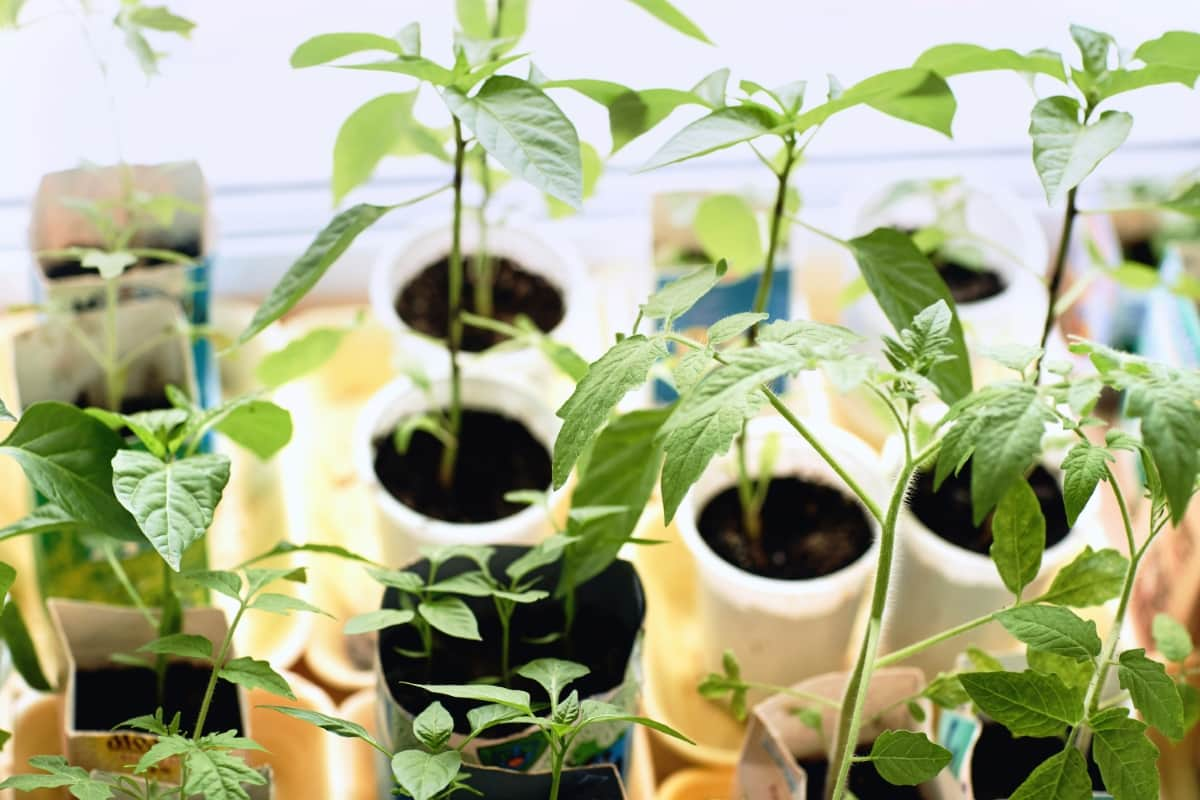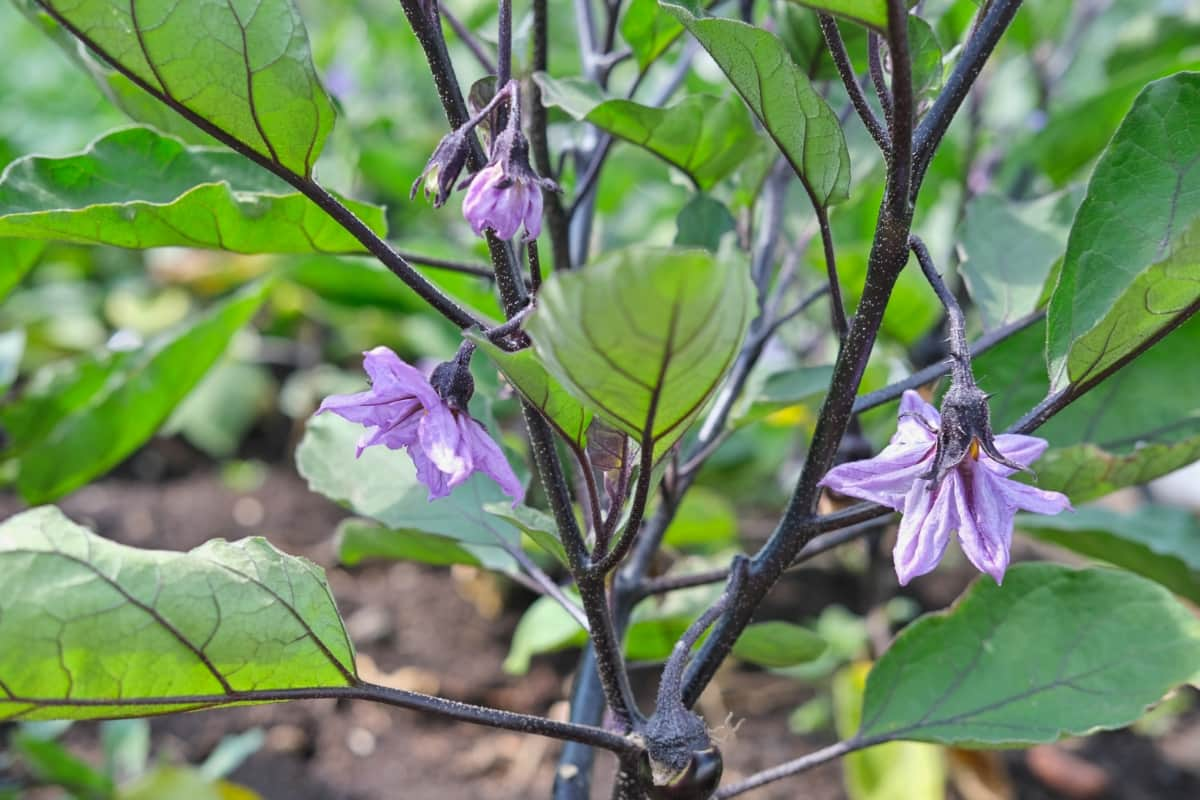Potted vegetable plants can be a great way to grow fresh produce, even in limited spaces. However, it can be frustrating when your plants fail to produce fruits. Here, we will explore the reasons why your potted vegetable plants may not be fruiting, offer some home remedies to encourage fruiting and provide tips on how to fix the issue.

Why are My Potted Vegetable Plants Not Fruiting
Insufficient Sunlight Exposure: Understanding the Importance of Light for Fruiting in Potted Vegetable Plants
One of the main reasons why potted vegetable plants may not be fruiting is insufficient sunlight exposure. Sunlight plays a crucial role in the fruiting process of plants as it is essential for photosynthesis, which provides the energy needed to produce fruits. When potted vegetable plants do not receive enough sunlight, they may become weak and fail to produce flowers or fruits.
To address this issue, it is recommended to choose a location for your potted vegetable plants that gets at least 6-8 hours of sunlight per day. If you have limited natural sunlight access, you can consider using artificial grow lights to supplement the light requirements of your plants.
Improper Watering Practices: Finding the Right Balance Between Under-Watering and Over-Watering
Another common reason for potted vegetable plants not fruiting is improper watering practices. Finding the right balance between under-watering and over-watering is crucial for your plants’ overall health and fruiting. Under-watering can lead to stress in plants, causing them to conserve energy and focus on survival rather than fruit production. On the other hand, over-watering can result in root rot and nutrient leaching, both of which can hinder the fruiting process.
To ensure proper watering, it is important to monitor the moisture levels of the soil. You can do this by sticking your finger about an inch into the soil. If it feels dry, it’s time to water your plants. However, if it feels moist, it’s best to wait before watering again. Additionally, it is advisable to use a well-draining potting mix that allows excess water to flow out easily. This helps prevent soggy conditions that can lead to root rot.
Nutrient Deficiencies: Identifying and Addressing Nutrient Imbalances in Potted Vegetable Plants
Nutrient deficiencies can also be why potted vegetable plants are not fruiting. Different plants have varying nutrient requirements, which can negatively impact fruit production if they are not met. To identify nutrient deficiencies, it is important to observe the symptoms exhibited by your plants. Common signs of nutrient deficiencies include yellowing leaves, stunted growth, and poor fruit development.
To address nutrient imbalances, it is recommended to use a balanced fertilizer specifically formulated for vegetable plants. This will provide nutrients like nitrogen, phosphorus, and potassium for healthy growth and fruiting. Additionally, it is important to ensure that your potted vegetable plants are not overcrowded, as this can lead to competition for nutrients. Giving each plant enough space will help maximize nutrient uptake and promote better fruit production.
Lack of Pollination: Exploring the Role of Pollinators and How to Encourage Pollination in Potted Plants
The lack of pollination can be a significant issue in potted plants, hindering fruit production and overall plant health. Pollinators, like bees, butterflies, and other insects, play a vital role in the pollination process. In potted plants, the absence of natural pollinators can be a challenge. To address this issue, planting flowers that are known to attract bees and butterflies can help create a welcoming environment for these beneficial insects.
One effective method is hand pollination, which involves manually collecting pollen from the male flowers and transferring it to the female flower. This can be done using a small brush or cotton swab. Gently brush the inside of the male flower to collect pollen and then transfer it to the stigma of the female flower.
Inadequate Pot Size: Understanding the Impact of Pot Size on Plant Growth and Fruit Production
The size of the pot in which a plant is grown can have an accountable impact on its growth and fruit production. Inadequate pot size restricts the plant’s root development, limiting its access to nutrients, water, and oxygen. This can result in stunted growth, reduced fruit production, and overall poor plant health. When choosing a pot for your plants, it’s important to consider their specific needs. Plants with shallow root systems, like herbs and lettuce, can thrive in smaller pots.
However, plants with deeper root systems, such as tomatoes and peppers, require larger pots to accommodate their extensive roots. Regular repotting is also essential to prevent the negative effects of inadequate pot size. As plants grow, their root systems expand, and they outgrow their current pots. Repotting them into larger containers provides more room for root development and refreshes the potting soil, ensuring an adequate supply of nutrients.
Temperature Extremes: Managing Temperature Fluctuations to Promote Fruiting in Potted Vegetable Plants
One way to manage temperature extremes is by providing insulation for potted plants. During cold weather, when temperatures drop below the plant’s tolerance level, covering the pots with a layer of horticultural fleece or bringing them indoors can help protect them from frost damage. Conversely, shading the plants or moving them to a cooler spot during hot weather can prevent excessive heat stress.
Maintaining consistent temperature levels is also important. Sudden temperature changes, such as moving potted plants from a warm indoors to a cold outdoor setting, can shock the plants and inhibit fruiting. Gradual acclimatization is recommended to allow the plants to adjust to the new temperature gradually.
In case you missed it: Benefits of Mineral Fertilizer Sticks: How to Use for Indoor Potted Houseplants

Pest Infestations: Recognizing Common Pests that Can Hinder Fruit Development and Implementing Pest Control Measures
Pest infestations can cause a significant threat to the development of fruits, affecting both the quantity and quality of the harvest. Farmers and gardeners must be able to recognize common pests that can hinder fruit development and implement effective pest control measures.
- Regular inspections should be conducted to control aphids, and affected plants can be treated with insecticidal soap or neem oil.
- Good sanitation practices should be followed to prevent fruit fly infestations, such as removing fallen or overripe fruits and using insect traps or barriers.
- To control codling moths, pheromone traps can monitor their population, and insecticides can be applied during specific life cycle stages.
- To manage spider mite infestations, regular monitoring is essential. Spraying affected plants with water or using insecticidal soap can help control their population.
Disease Issues: Identifying and Treating Diseases that Can Affect Fruiting in Potted Vegetable Plants
- Prune or remove any visibly diseased leaves, stems, or fruits to prevent the disease from spreading to healthy parts of the plant.
- Good air circulation can reduce humidity levels and minimize the risk of fungal diseases.
- Ensure that your potted vegetable plants are not overcrowded and provide adequate spacing between plants.
- Overwatering can create favorable conditions for diseases like root rot. Wait until the soil dries between watering to avoid waterlogged conditions.
- When selecting potted vegetable plants, opt for disease-resistant varieties whenever possible. These varieties have been bred to have enhanced resistance to common diseases, reducing the risk of infection.
- In severe cases where the disease is spreading rapidly or causing significant damage, you may need to use appropriate fungicides or pesticides.
Improper Pruning Techniques: Learning how to Prune Potted Vegetable Plants for Optimal Fruit Production Properly
Pruning is an essential practice in gardening as it helps promote healthy growth, control plant size, and improve fruit yield. However, improper pruning techniques can have negative consequences, such as reduced fruit production, stunted growth, and increased disease susceptibility. Over-pruning can weaken the plant, resulting in poor fruit development and yield.
Therefore, avoid excessive pruning and only remove the necessary branches and foliage. Another improper pruning technique to avoid is pruning at the wrong time. Each vegetable plant has different growth patterns, and understanding the specific requirements of each plant is crucial for successful pruning. Pruning at the wrong time, such as during the flowering or fruiting stage, can disrupt the plant’s natural growth cycle and hinder fruit production.
In case you missed it: Hydroponic Tomatoes Not Flowering: Reasons. How to Fix, and Solutions

Proper pruning techniques involve removing dead, damaged, or diseased branches and thinning out crowded areas to improve air circulation and light penetration. Removing these unwanted parts promotes healthier growth and reduces the risk of diseases and pests.
Conclusion
Growing potted vegetable plants can be a rewarding experience, but it can be disheartening when they fail to produce fruits. Addressing the common reasons for non-fruiting plants and implementing the suggested remedies can increase the chances of a bountiful harvest.
- Feed Your Flock for Less: Top 10 Tips to Save on Chicken Feed
- Ultimate Guide to Ossabaw Island Hog: Breeding, Raising, Diet, and Care
- Hatching Answers: The Top 10 Reasons Your Chickens Aren’t Laying Eggs
- Eggs and Economics: Breaking Down the Cost of Raising Backyard Chickens
- Defend Your Greens: Proven Methods to Keep Iguanas Out of Your Garden
- Ultimate Guide to Cinnamon Queen Chicken: A Comprehensive Guide for Beginners
- Ultimate Guide to California Tan Chicken: Breeding, Raising, Diet, Egg-Production and Care
- Ultimate Guide to Marsh Daisy Chicken: Breeding, Raising, Diet, and Care
- 10 Types of Chicken Farming Businesses You Can Start for Profits